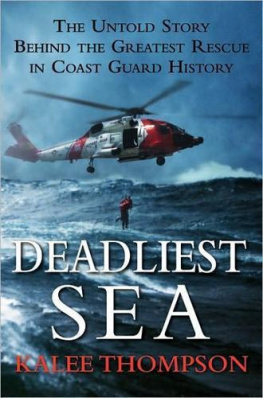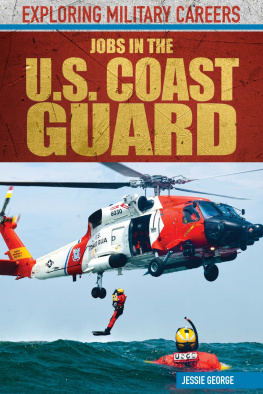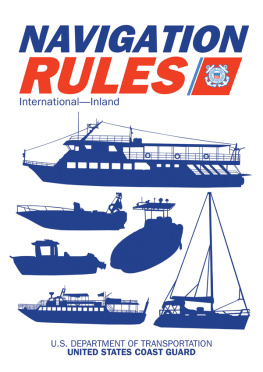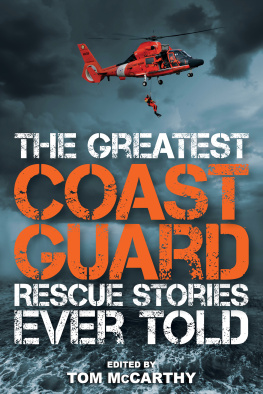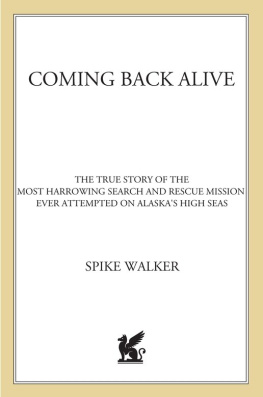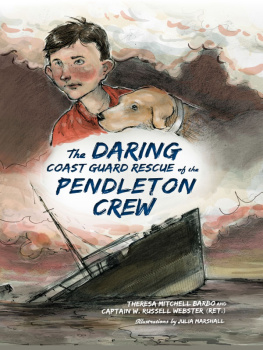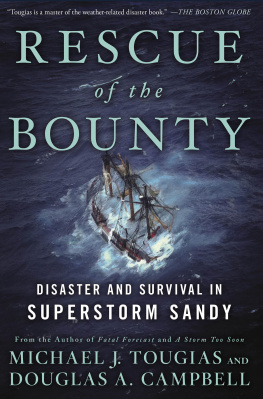Kalee Thompson - Deadliest Sea: The Untold Story Behind the Greatest Rescue in Coast Guard History
Here you can read online Kalee Thompson - Deadliest Sea: The Untold Story Behind the Greatest Rescue in Coast Guard History full text of the book (entire story) in english for free. Download pdf and epub, get meaning, cover and reviews about this ebook. year: 2014, publisher: HarperCollins e-Books, genre: Detective and thriller. Description of the work, (preface) as well as reviews are available. Best literature library LitArk.com created for fans of good reading and offers a wide selection of genres:
Romance novel
Science fiction
Adventure
Detective
Science
History
Home and family
Prose
Art
Politics
Computer
Non-fiction
Religion
Business
Children
Humor
Choose a favorite category and find really read worthwhile books. Enjoy immersion in the world of imagination, feel the emotions of the characters or learn something new for yourself, make an fascinating discovery.
- Book:Deadliest Sea: The Untold Story Behind the Greatest Rescue in Coast Guard History
- Author:
- Publisher:HarperCollins e-Books
- Genre:
- Year:2014
- Rating:3 / 5
- Favourites:Add to favourites
- Your mark:
Deadliest Sea: The Untold Story Behind the Greatest Rescue in Coast Guard History: summary, description and annotation
We offer to read an annotation, description, summary or preface (depends on what the author of the book "Deadliest Sea: The Untold Story Behind the Greatest Rescue in Coast Guard History" wrote himself). If you haven't found the necessary information about the book — write in the comments, we will try to find it.
Abstract: Soon after 2:00 A.M. on Easter morning, March 23, 2008, the fishing trawler Alaska Ranger began taking on water in the middle of the frigid Bering Sea. While the first mate broadcast Mayday calls to a remote Coast Guard station more than eight hundred miles away, the men on the ships icy deck scrambled to inflate life rafts and activate the beacon lights, which would guide rescuers to them in the water. By 4:30 A.M., the wheelhouse of the Ranger was just barely visible above the seas surface, and most of the forty-seven crew members were in the water, wearing the red survival suitsa number of them torn or inadequately sizedthat were supposed to keep them from freezing to death. Every minute in the twenty-foot swells was a fight for survival. Many knew that if they werent rescued soon, they would drown or freeze to death. Two Coast Guard helicopter rescue teams were woken up in the middle of the night to save the crew of the Alaska Ranger. Many of the men thought the mission would be routine. They were wrong. The helicopter teams battled snow squalls, enormous swells, and gale-force winds as they tried to fulfill one guiding principle: save as many as they could. Again and again, the helicopters lowered a rescue swimmer to the oceans surface to bring the shipwrecked men, some delirious with hypothermia, some almost frozen to death, back to the helicopter and to safety. Before the break of dawn, the Coast Guard had lifted more than twenty men from the freezing wavesmore than any other cold-water Coast Guard rescue in history. Deadliest Sea is a daring and mesmerizing adventure tale that chronicles the power of nature against man, and explores the essence of the fear each man and woman must face when confronted with catastrophe. It also investigates the shocking negligence that leads to the sinking of dozens of ships each year, which could be prevented and makes commercial fishing one of the most dangerous occupations in the world. With deft writing and technical knowledge, veteran journalist Kalee Thompson recounts the harrowing stories of both the rescuers and the rescued who survived the deadly ordeal in the Bering Sea. Along the way, she pays tribute to the courage, tenacity, and skill of dedicated service people who risk their own lives for the lives of others
Kalee Thompson: author's other books
Who wrote Deadliest Sea: The Untold Story Behind the Greatest Rescue in Coast Guard History? Find out the surname, the name of the author of the book and a list of all author's works by series.

